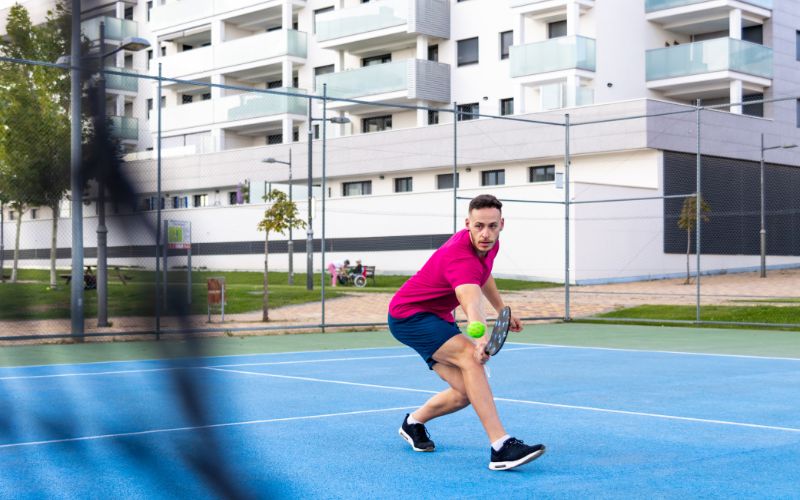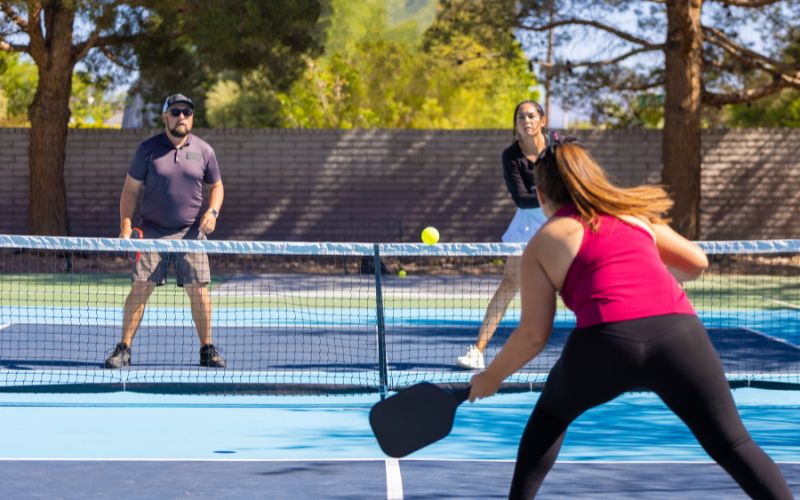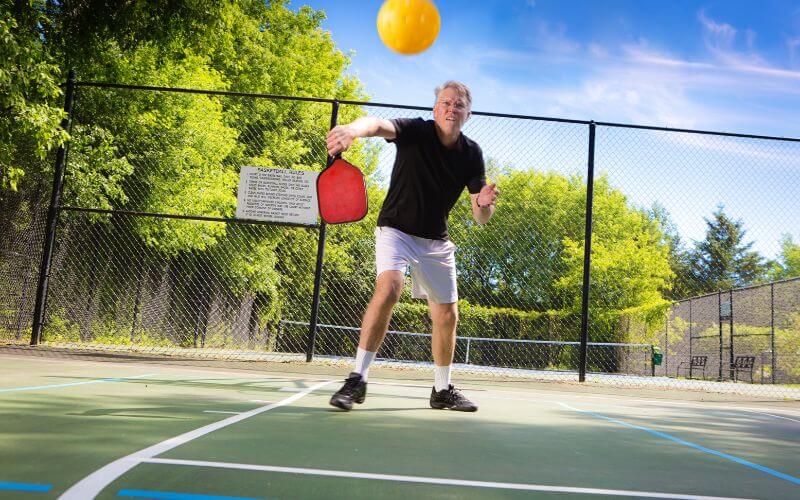Pickleball, a sport gaining immense popularity across various age groups, combines elements of tennis, badminton, and table tennis. As players immerse themselves in the game, strategies evolve, and one such strategic move often discussed is “what is poaching in pickleball.” Poaching, an effective strategy employed by advanced players, involves a strategic move that influences the game’s flow. Let’s delve deeper into this aspect, understanding its nuances, effectiveness, and impact on the gameplay.
What Is Poaching in Pickleball?
In pickleball, poaching is an aggressive move where a player leaves their assigned position to intercept a shot aimed at their partner’s side of the court. This maneuver occurs when the player believes they can handle the shot better or intends to take advantage of an open court. Typically, poaching involves leaving a designated area to cover a shot aimed at the partner’s backhand or exploiting an open play.
Essential Elements of Poaching
Positioning and Timing
Poaching requires impeccable positioning and timing. It demands swift movement and an acute understanding of the game to accurately anticipate the opponent’s shot trajectory. The poacher aims to gain control of the game and pressure the opponents by intercepting the ball before it reaches the intended target.
Effective Communication
Successful poaching often hinges on effective communication between partners. Non-verbal cues, understanding each other’s game style, and strategizing to cover weaknesses and leverage strengths are crucial in executing this maneuver seamlessly.
The Significance of Poaching in Pickleball
A Strategic Advantage
Poaching is not only about making an aggressive move but also about gaining a strategic advantage. By disrupting the opponents’ rhythm, the poacher can alter the game’s momentum. It can lead to quick points, building psychological pressure on the opposition and creating an advantageous situation for the poacher’s team.
Capitalizing on Open Court
Poaching involves seizing the opportunity presented by an open court. When the opponent hits a shot that leaves a significant portion of the court unguarded, the poacher strategically moves to exploit this opening. This proactive approach often catches opponents off guard, making it an effective strategy.
Pressure on Opponents
When executed effectively, poaching exerts pressure on the opponents. It forces them to reconsider their shot selections, compelling them to hit more precise shots to avoid the poacher’s reach. This can lead to mistakes or hesitant shots, providing the poacher’s team an edge.
Mastering the Art of Poaching
Skills and Techniques
Poaching isn’t solely reliant on athleticism; it requires strategic thinking and anticipation. Advanced players hone these skills through practice, analyzing opponents’ patterns, and refining their court positioning.
Anticipating the Next Shot
To poach effectively, a player needs to anticipate the next shot. This anticipation is derived from understanding the opponent’s tendencies, observing their body language, and predicting the ball’s trajectory.
Switching Sides and Covering Open Courts
An effective poacher is adept at switching sides swiftly. They move to cover an open court, anticipating the opponent’s move and positioning themselves to intercept or counter the shot effectively.
The Impact of Poaching on Recreational Play
Enhancing the Game Experience
In recreational play, poaching adds an element of thrill and excitement. While it might not be as common as in competitive play, occasionally implementing poaching strategies can elevate the fun and challenge for players.
Communication and Collaboration
Even in recreational settings, effective poaching emphasizes the importance of communication and collaboration between partners. It encourages players to work as a team, covering each other’s weaknesses and capitalizing on the opponents’ vulnerabilities.
Reasons to Utilize Poaching on the Pickleball Court
Poaching stands as a pivotal and potent tactic in pickleball, offering an avenue to secure more points due to several key reasons:
- Empowerment of the Best Shot: Poaching allows the player to possess the ability to deliver the most skillful shot to take charge. This strategic move enables the team to capitalize on the strengths of the more proficient shot-maker within the partnership.
- Imposing Pressure on Opponents: Poaching exerts pressure on opponents by necessitating a higher quality of shot-making. Its effectiveness thrives when opponents deliver higher balls. Lower hits restrict the opportunity to cross the centerline and execute aggressive shots, potentially limiting the play to simpler dinks. Conversely, when opponents deliver floaty shots, poaching becomes more accessible and impactful.
- Restricting Opponents’ Options: By executing a poach, angles available to opponents are curtailed, thereby reducing their reaction time—a tactic always aimed at unsettling opponents. The element of surprise inherent in a poach, an aggressive move often unexpected, further disorients opponents.
- Confounding Opponents: A poach presents a different perspective to opponents, keeping them uncertain regarding the strategies and actions of the poaching team. This continual unpredictability can unsettle opponents as they anticipate the next move. Moreover, executing an effective poach sets the stage for further psychological impact by feigning future poaching attempts, perpetuating their discomfort.
In the world of pickleball, poaching stands as an effective strategy used by advanced players to gain a competitive advantage. It involves calculated risks, strategic positioning, and impeccable timing. While not always necessary in recreational play, understanding poaching in pickleball can elevate one’s game, adding depth and strategy to the overall playing experience. As players continue to hone their skills and strategies, poaching remains an intriguing aspect that sets apart the skilled from the merely competent on the court.
FAQs on Poaching in Pickleball
What exactly are third-shot sports or shot sports in pickleball?
Third shot sports, also known as shot sports in pickleball, refer to the crucial phase of the game following the serve and return. The third shot determines the positioning and strategy for the rest of the rally, often requiring precision and strategic placement.
What are a few reasons to incorporate poach shots into pickleball gameplay?
There are several compelling reasons to utilize poach shots in pickleball:
- Empowerment of the Best Shot: Poaching allows the player with superior shot-making abilities to take charge, maximizing the team’s strengths.
- Imposing Pressure on Opponents: It forces opponents to deliver higher quality shots, limiting their options and potentially inducing mistakes.
- Restricting Opponents’ Options: A successful poach diminishes angles available to opponents, reducing their reaction time and unsettling them.
- Confounding Opponents: Poaching presents a different perspective, keeping opponents uncertain and uncomfortable, creating a psychological advantage.
Can recreational players benefit from employing poaching strategies in pickleball?
While poaching is more commonly associated with competitive play, recreational players can benefit from occasional poaching tactics. It excites the game and encourages better communication and teamwork among partners.
How can one effectively anticipate the next shot in pickleball to execute a successful poach?
Anticipating the next shot involves understanding opponents’ tendencies, observing their body language, and predicting ball trajectory. It requires practice, analysis of opponents’ patterns, and honing court positioning skills to intercept or counter shots effectively.
Is poaching solely reliant on athleticism, or does it also involve strategic thinking?
Poaching isn’t solely about athleticism; it demands strategic thinking, anticipation, and timing. Advanced players hone these skills through practice, enhancing their ability to execute successful poaches by reading the game and opponents’ moves.






